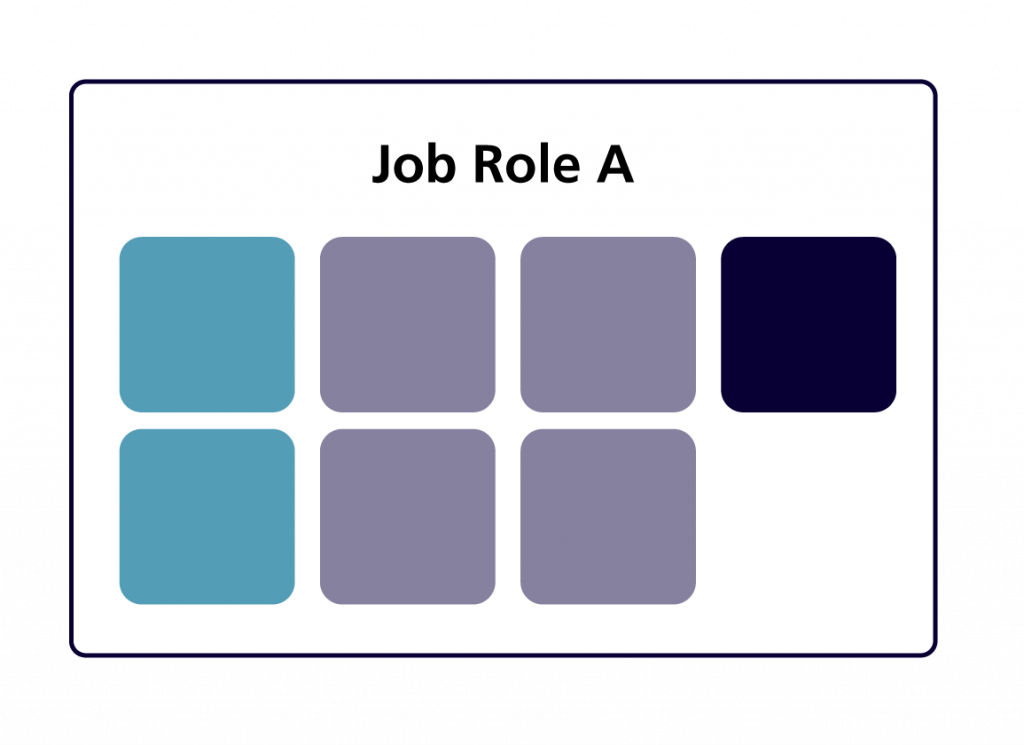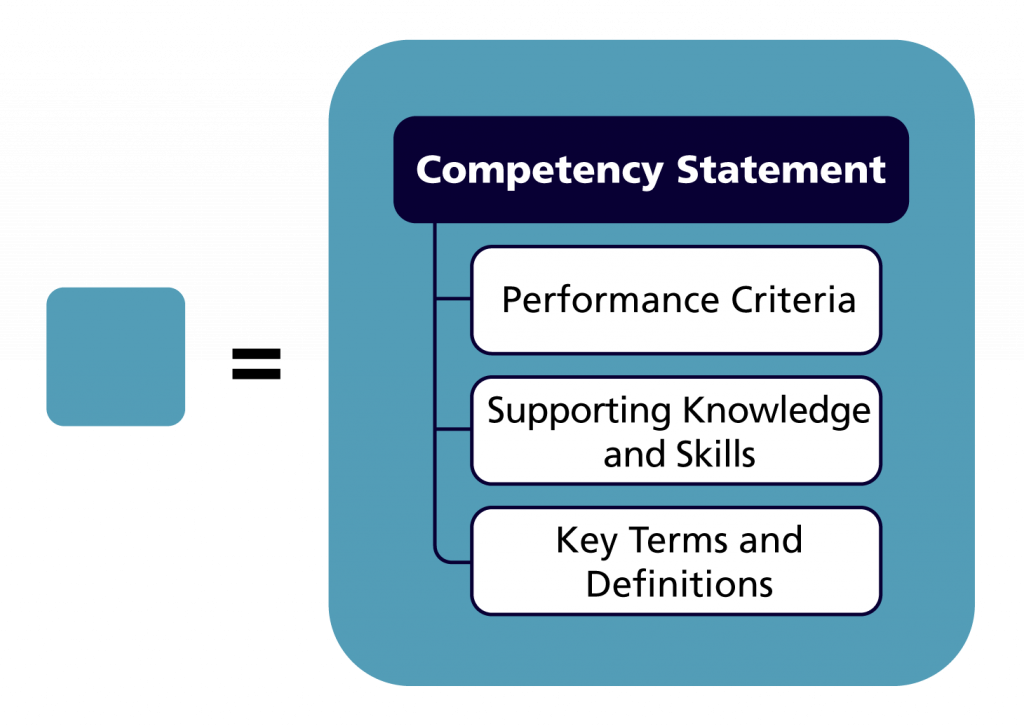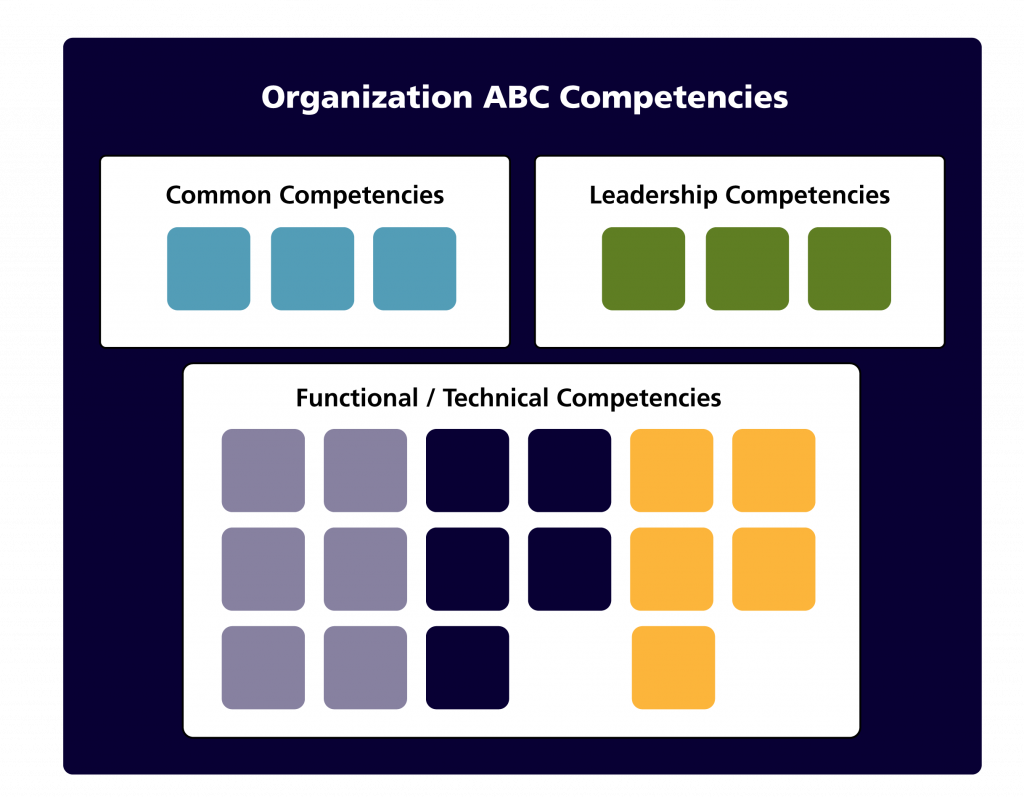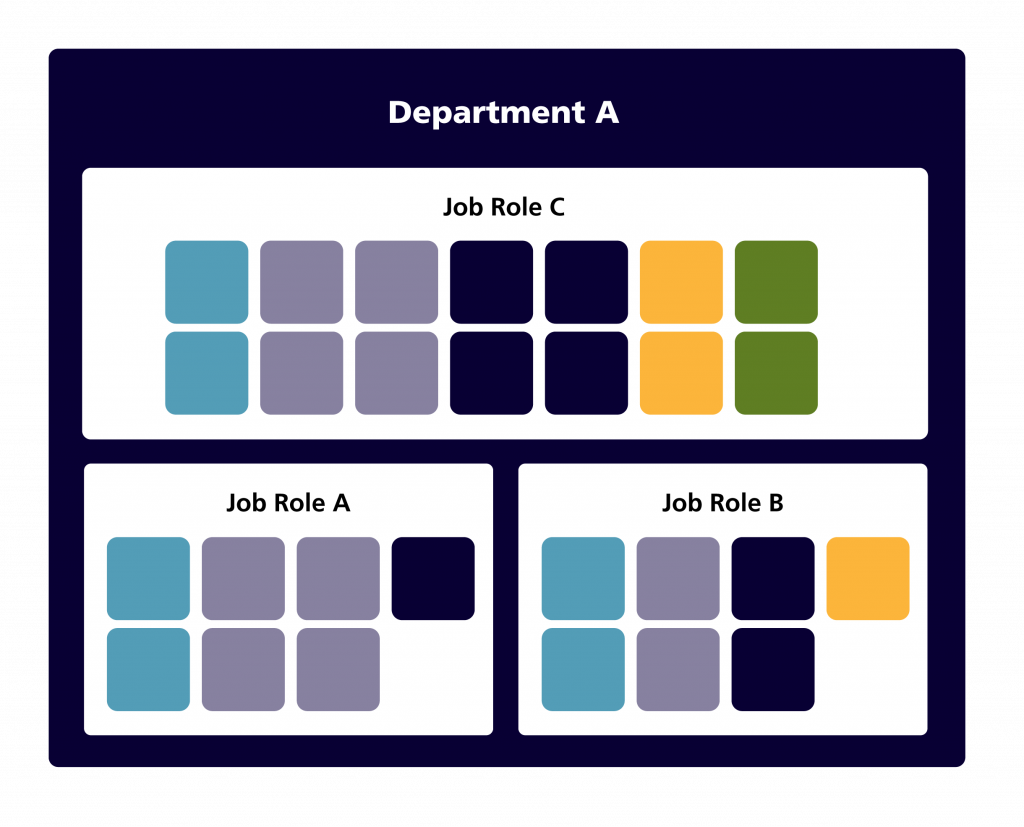6 What are competency frameworks?
Competency frameworks are simply a combination of competencies that have been organized in some fashion, and usually consist of a minimum of three components:
- competencies,
- structures and hierarchies that organize competencies into groupings and/or categories, and
- connections between competencies, learning resources and assessments.
A competency framework may also include additional information, depending on its use case and intended audience. These could include information on specific occupations or sectors, link to training and/or certification requirements, or may identify skill or competency areas that overlap with other frameworks, etc.
Competency frameworks can be big or small, and evolve over time. The simplest and smallest example of a competency framework might be a job description. It outlines the skills, knowledge, and attributes required for a single position, but likely will include some common, shared competencies that relate to other positions, and some functional or technical competencies specific to the role.


Although a competency framework that includes a single job description is unlikely, an organization may well have a small framework that includes all the competencies required across multiple job roles within each department and across the whole organization.


At the opposite end of the spectrum, a competency framework that covers an entire continent, like the European Skills/Competences, qualifications and Occupations framework (ESCO) consists of over 13,000 competencies tied to thousands of occupations and qualifications, and is extremely complex in the number of hierarchies and layers of information (taxonomies) that it contains.
Later on in the toolkit we’ll look specifically at ways to use competencies and groups of competencies within a framework.
A combination of well-defined competencies and hierarchical information on how competencies are grouped and connected to work activities, job roles, assessments and more for various applications.

